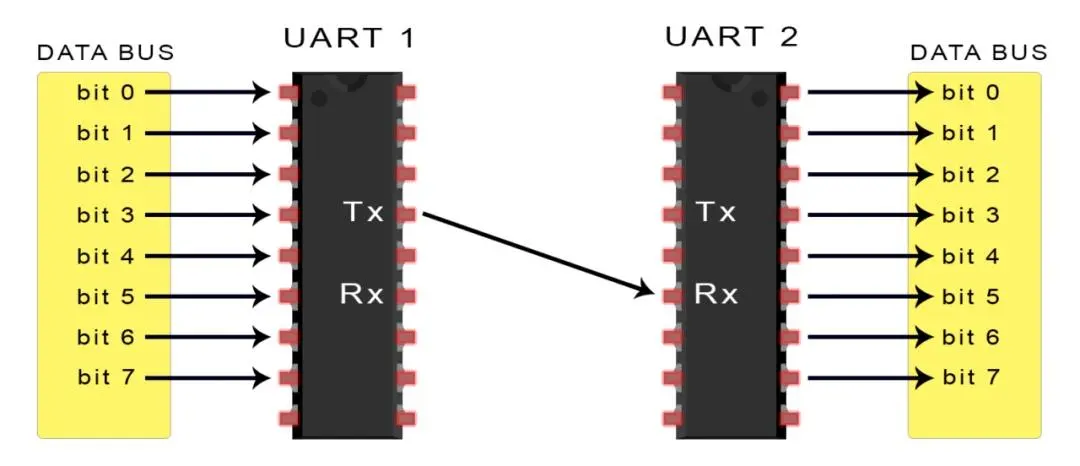
UART, SPI, and I2C are common communication protocols used in embedded systems and IoT devices to transfer data between integrated circuits, microcontrollers, and sensors.
UART (Universal Asynchronous Receiver/Transmitter) is a serial communication protocol that allows full duplex asynchronous communication between two devices. In UART, data is sent one bit at a time sequentially over a single communication line. UART requires only two wires – a transmit pin (TX) and receive pin (RX) – making it simple to implement in hardware. A key advantage of UART is that it does not require a clock signal for synchronization between devices. The transmitting device adds start and stop bits to frame each byte that is sent, while the receiving device uses these bits to identify byte boundaries. UART enables high data rates up to 10 Mbps and has built-in error checking capabilities. It is commonly used for serial console interfaces, GPS modules, Bluetooth modules, and other simple short distance communications.
SPI (Serial Peripheral Interface) is a synchronous serial protocol that provides full duplex communication. It uses four wires – clock (SCK), master output/slave input (MOSI), master input/slave output (MISO), and slave select (SS). The SCK line synchronizes data movement between devices while MOSI and MISO carry the data. SS is an active low signal used by the master to select a particular slave device when multiple slaves are present. In SPI, data can only move in one direction at a time, making it a simpler protocol than I2C. SPI devices operate in either master or slave mode. It supports high speed data transfer up to 80 Mbps and is commonly used for communication with SD cards, sensors, and LCD displays.
I2C (Inter-Integrated Circuit) allows bi-directional half-duplex synchronous serial communication between integrated circuits. It requires only two bidirectional wires – serial data (SDA) and serial clock (SCL). I2C uses open collector wiring which means the SDA and SCL lines are pulled up with resistors. Devices on the I2C bus act as either master or slave. The master device generates the clock signal and initiates all communications with one or more slave devices. Each slave device has a unique address on the bus which allows the master to initiate a transfer specifically with it. I2C supports multi-master and multi-slave communication which provides great flexibility. Data rates up to 100 kbps are possible. I2C is commonly used for communication with lower-speed peripherals such as sensors, motors, and EEPROMs.
In summary, UART, SPI, and I2C are widely used serial communication protocols suited for different applications based on factors like speed, supported communication modes, hardware complexity, and device compatibility. UART is the simplest to implement but also slower compared to SPI and I2C. SPI provides high speed synchronous full duplex communication while I2C’s support for multi-master makes it very versatile.


